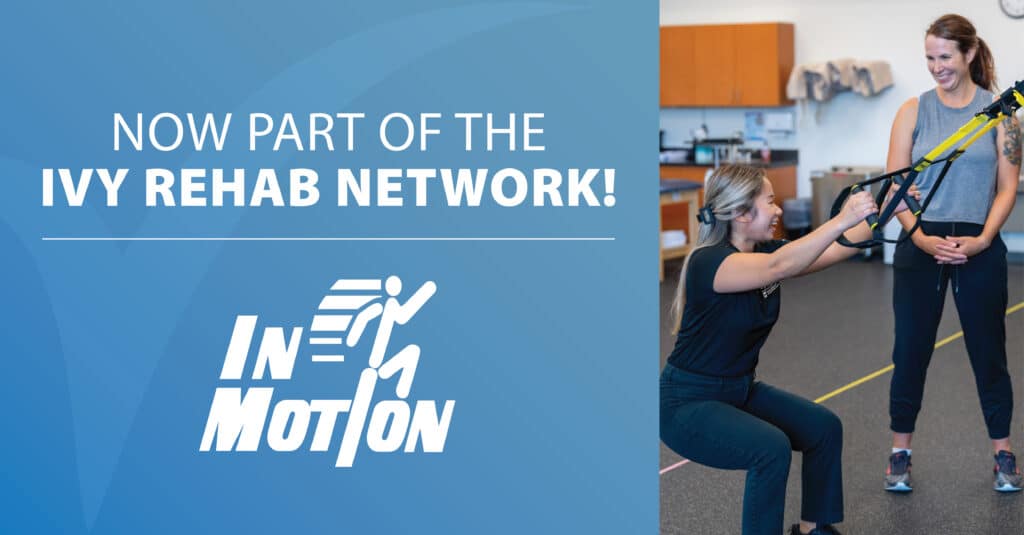Living with chronic pain can take its toll physically and psychologically. Many chronic pain patients find it difficult to do daily tasks and enjoy simple things in life. Work. Recreation. Shopping. Self-care activities. Time with family and friends. Everything is shrouded by a nagging sense of pain or revolves around taking medication to mask the pain.
The good news is there are alternative treatments to pain therapy, including physical therapy. Physical therapists are movement experts and empower patients with knowledge of how the body and pain works. They assess and treat a variety of conditions that cause pain, including acute injuries, rehab after surgery, and chronic illnesses.
October is National Physical Therapy Month and also National Spine Health Awareness Month. It’s a great time to spread the word about the many benefits of physical therapy. Choose physical therapy to improve mobility and athletic performance, manage pain and other chronic conditions, recover from injury or surgery, and prevent future injury and chronic disease.
The Prevalence of Chronic Pain
In 2016, an estimated 20.4% of U.S. adults, or 50 million people, had chronic pain and 8% of U.S. adults, or nearly 20 million, had high-impact chronic pain, according to Centers for Disease Control. Chronic pain is associated with numerous physical and mental conditions, lost productivity, and opioid addiction, which drives up health care costs and impacts public health.
An estimated 75 percent of Americans experience lower back pain at some point in their life. Back pain is also a leading cause of disability for young and old, making spinal health and chronic pain an important topic of conversation.
The spine, composed of nerves, muscles, and ligaments, is under constant demand and sends signals to other parts of the body to help your body function properly. Maintaining good spinal health greatly impacts your overall quality of life, regardless of whether you do manual labor, stand on your feet all day, or even sit behind a computer screen.
Many spinal conditions and spinal deterioration also cause chronic neck and back pain, including:
- Degenerative disc disease
- Herniated and bulging discs
- Spinal stenosis
- Sciatica
- Arthritis
- Pinched nerves
- Shooting pain in arms or legs
- Failed neck or back surgery
After an initial assessment and therapy sessions, your physical therapist may recommend education, manual techniques, stretches, gentle exercises, and other at-home care practices to help manage and treat chronic pain.
Tips for Managing Chronic Pain
- Knowledge is power: Learn all you can about your condition, possible pain triggers, your treatment options, and the side effects of medication. Talk to your doctors about their recommended plan of care and play an active role in managing your pain. Don’t be afraid to seek out a second opinion or research alternative and non-invasive treatment options.
- Keep moving: Movement is often the best medicine! A sedentary lifestyle makes the body get stiff and breaks down even more. It has been called disuse syndrome. Gentle stretches and yoga keep the joints lubricated and your spine flexible. A strong and aligned spine impacts your overall health and improves balance, organ health, circulation, breathing, digestion, and mobility. Even a brisk walk does wonders for your overall health.
- Go to a PT: Physical therapy is beneficial if you need rehab after an injury or surgery or want to move without pain. A PT can help improve your mobility and possibly alleviate the need for medication. In some cases, they focus on education and help patients become aware of daily habits and poor posture that may be contributing to their pain. They are trained in movement patterns and biomechanics and can develop fitness and lifestyle strategies that can help reduce or manage pain.
- Focus less on a diagnosis: Don’t let your illness or pain consume you. It can be easy to worry and wonder if you will always have pain. Often, your attitude and motivation can play a big role in your progress. Try to trust your doctors and the advice of your physical therapists and make changes to improve your overall health. Positive thinking can do wonders when it comes to finding healthy ways to deal with your diagnosis, especially chronic health problems.
- Address anxiety and depression: Left untreated, chronic pain can permeate all aspects of your life. It often leads to anxiety, depression, and even suicidal thoughts. Mental and emotional wellness is a key piece of coping with chronic pain. Seek out a therapist, try mindfulness meditation, and employ other self-care strategies. Cognitive-behavioral therapy can help change the thoughts, emotions, and behaviors related to pain and improve coping strategies.
If you experience short-term or chronic pain in your back or other extremities, visiting a physical therapist can be empowering, educational, and truly life-changing. Contact Ivy Rehab for more information on managing chronic pain or to learn how PT can put you on the road to recovery and living a pain-free life!
Article Reviewed by Holly Lookabaugh-Deur, PT, DSc, GCS, CEEAA
Holly Lookabaugh-Deur, PT, DSc, GCS, CEEAA is a practicing physical therapist and a partner and Director of Clinical Services at Ivy Rehab Network. Deur is board certified as a geriatric clinical specialist and certified exercise expert for aging adults with more than 35 years of clinical experience. She is certified as an aquatic and oncology rehabilitation specialist and serves as adjunct faculty at Central Michigan University and Grand Valley State University.







